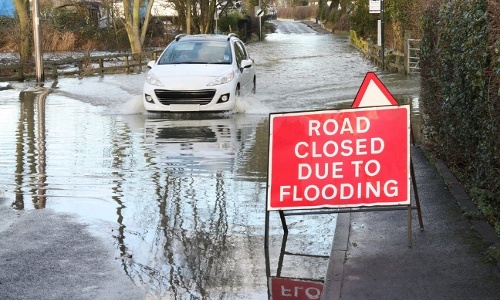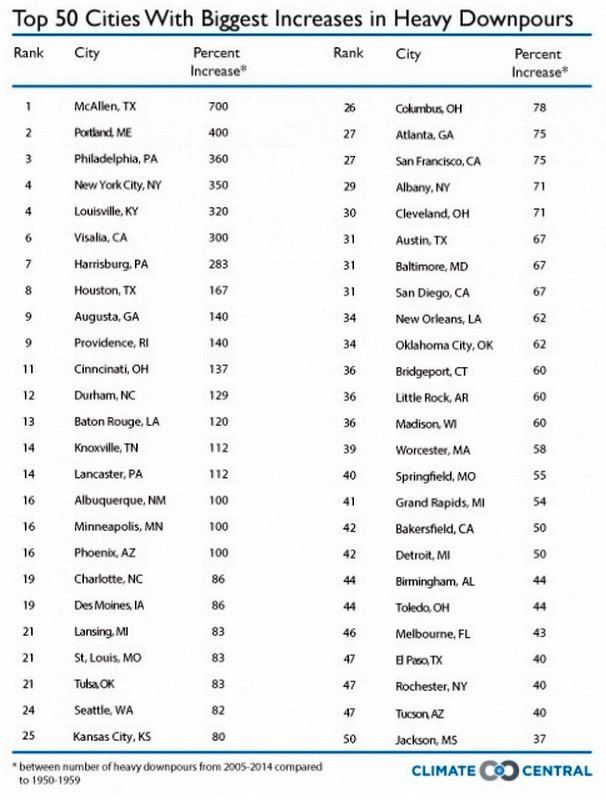

Climate Central cited heavy rainfalls in Nashville and Detroit as examples of the impact of such rains. In Nashville in 2010, 13.6 inches of rain in a mere two days killed 11 people and caused $2 billion in damages. An August 2014 downpour in Detroit killed two and caused $1.1 billion in damages. The group also pointed to the potential health risks of such rainfall. It found that approximately half of the waterborne disease outbreaks in the U.S. from 1948 through 1994 were linked to periods of heavy rain.

The Texas rainfall has alleviated the drought the state suffered from last year, when half of it was under severe, extreme or exceptional drought. Now none is, and only a small fraction of the state is reporting even moderate drought. But that’s probably little consolation to the residents of the 37 Texas counties in which Gov. Greg Abbott has declared disaster areas, saying “You cannot candy coat it. It’s absolutely massive.”
Both Texas Senators, John Cornyn and Ted Cruz, are climate deniers who would vigorously dispute what Climate Central has to say, despite the fact that Texas suffers from a greater number of costly weather-related disasters than any state, including drought, heat and wildfires.
“Extreme heavy downpours are consistent with what climate scientists expect in a warming world,” Climate Central explained. “With hotter temperatures, more water evaporates off the oceans, and the atmosphere can hold more moisture. Research shows that the amount of water vapor in the atmosphere has already increased. That means that there is often a lot more water available to come down as rain. Climate scientists have already shown that increasing greenhouse gas concentrations as a consequence of human activity are partially responsible for the average global increase in heavy precipitation.”
Measuring and dealing with such downpours is made difficult by the fact that, compared to extreme temperatures, they tend to be localized rather than regional events and random in nature, making it hard to tell where they will occur. But according to Climate Central, scientists think the increase in heavy downpours will continue throughout the 21st century.
“Climate models predict that if carbon emissions continue to increase as they have in recent decades, the types of downpours that used to happen once every 20 years could occur every 4 to 15 years by 2100,” said Climate Central. “As the number of days with extreme precipitation increases, the risk for intense and damaging floods is also expected to increase throughout much of the country.”
YOU MIGHT ALSO LIKE
Deadly Flooding in Texas Latest Example of Extreme Weather
Ted Cruz Continues to ‘Coddle’ His Fossil Fuel Funders in Wake of Deadly Texas Floods

 233k
233k  41k
41k  Subscribe
Subscribe 